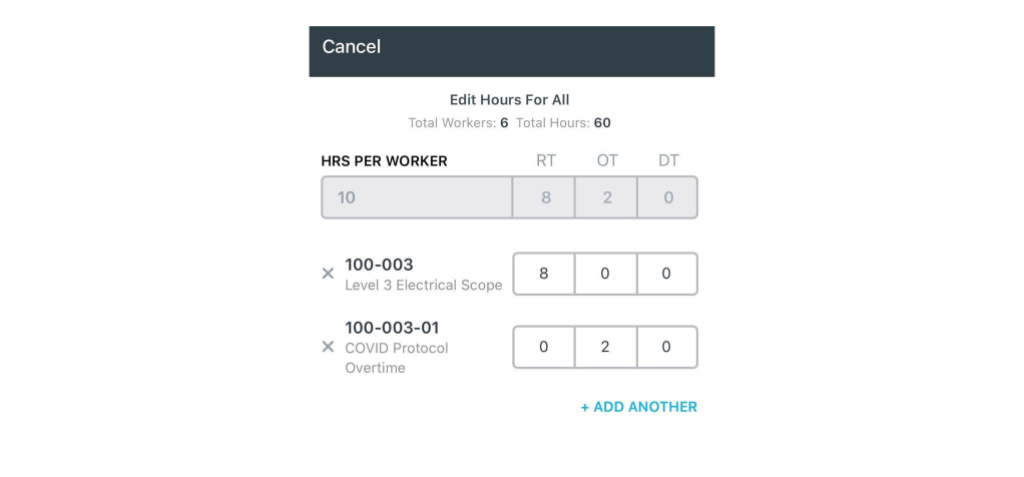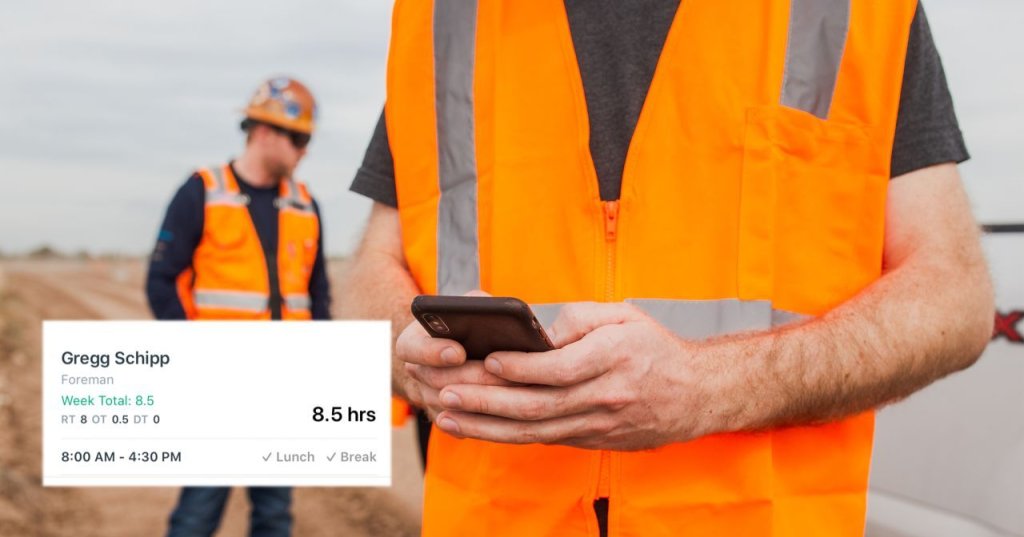As cities and projects begin to reopen and recover from the COVID-19 shutdown, construction companies have been forced to change the way in which they operate to ensure safety and compliance. Now more than ever, time cards are critical for specialty contractors to maintain a record of productivity and streamline their workflows. Here are some of the ways we’ve seen time cards used in the wake of COVID-19:
Overtime and productivity
Every day, staying compliant with the increased safety and cleaning protocols has an effect on your crew’s productivity. From social distancing to health verification paperwork, it may not seem significant at first, but all the extra minutes spent add up to hours in your month—hours that can affect your completion deadline and approved budgets. When faced with this impacted productivity, you have two choices: pay overtime to get the work done on time or delay the project. 9 times out of 10, most companies will choose the first option to pay overtime. But who exactly will pay for the overtime? Before you can determine that, you need to have precise hours tracked in a single system.
Digitally tracking all your crews’ hours (including overtime) and allocating them to specific cost codes will show you exactly how much your productivity is being impacted and where the time is being spent. The more accurate your data is, the more powerful it is for showing your owner or GC the added costs and production implications. By implementing a solution that lets you log time directly on the jobsite, you’ll have the clearest picture of what’s going on in the field.

Litigation protection
Once you have all your crews’ time data recorded and stored, this will serve as evidence when the inevitable disputes happen down the road over loss in productivity and getting paid. If you don’t have anything properly documented, your chances of winning won’t be high. Taking the initiative to document your time cards and specifically tracking COVID-19 protocols will set you up to protect yourself later on.
How do you currently save your time card information? If it’s stored as a bunch of loose papers in a file, you’re creating more work for yourself to track them down at a later date when you need them. Set your business up for success now by creating an organized, streamlined way to capture hours and effectively turn them into data for different workflows. By having them stored in one place that you can easily search, you’re saving time for your future self—and for your payroll processing team as they export the data on a regular basis. The last thing anyone wants to do right now is spend more time verifying hours or looking for a specific piece of paper. A digital time card solution helps you work smarter now, and be more prepared for potential litigation in the future.
Better communication
In the construction industry, maintaining good relationships is crucial to the success of your company. This pandemic has brought some unprecedented challenges to the industry, but strong communication makes a huge difference in how we overcome them together. As you begin to document your overtime and changes in production, make sure you are consistently notifying all the relevant stakeholders. The earlier you can communicate the added hours and potential costs, the less likely it will come to litigation.
Give them plenty of time to understand what the added implications are and start the conversations that need to happen around who will be paying and what the costs may look like. If a GC or owner doesn’t see any of the added hours until it’s time to pay the bill, it’ll leave a bad taste in their mouth and they won’t be as willing to work with you again. Make sure you’re over-communicating everything that’s going on at the jobsite to cover your bases and keep the relationship strong.
Start to prepare by looking at your initial contracts and make a plan to capture what you’re initially owed. Anything past this will be beyond scope, so you’ll need to start communicating where that overtime comes in and how much it will cost. If you have a digital time card solution, it’s even easier to send weekly or monthly updates to the applicable stakeholders and maintain that transparency. Not to mention, it’ll show you’re on top of all your jobsite data—increasing your company’s reputation for excellent production tracking and building more trust.
